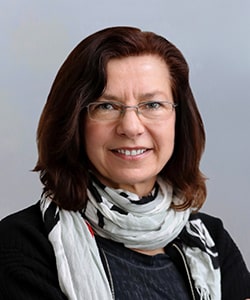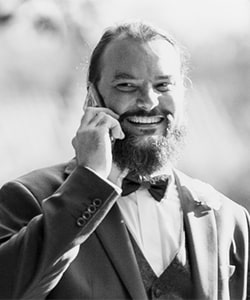Spring 2023
 January 27, 2023: Bobby Gramacy (Department of Statistics at Virginia Tech)
January 27, 2023: Bobby Gramacy (Department of Statistics at Virginia Tech)
Title: Deep Gaussian Process Surrogates for Computer Experiments
[Gramacy Talk Recording] [Gramacy Talk Slides]
Abstract: Deep Gaussian processes (DGPs) upgrade ordinary GPs through functional composition, in which intermediate GP layers warp the original inputs, providing flexibility to model non-stationary dynamics. Recent applications in machine learning favor approximate, optimization-based inference for fast predictions, but applications to computer surrogate modeling – with an eye towards downstream tasks like calibration, Bayesian optimization, and input sensitivity analysis – demand broader uncertainty quantification (UQ). We prioritize UQ through full posterior integration in a Bayesian scheme, hinging on elliptical slice sampling the latent layers. We demonstrate how our DGP’s non-stationary flexibility, combined with appropriate UQ, allows for active learning: a virtuous cycle of data acquisition and model updating that departs from traditional space-filling design and yields more accurate surrogates for fixed simulation effort. But not all simulation campaigns can be developed sequentially, and many existing computer experiments are simply too big for full DGP posterior integration because of cubic scaling bottlenecks. For this case we introduce the Vecchia approximation, popular for ordinary GPs in spatial data settings. We show that Vecchia-induced sparsity of Cholesky factors allows for linear computational scaling without compromising DGP accuracy or UQ. We vet both active learning and Vecchia-approximated DGPs on numerous illustrative examples and a real simulation involving drag on satellites in low-Earth orbit. We showcase implementation in the deepgp package for R on CRAN.
Bio: Bobby Gramacy is Professor of Statistics at Virginia Tech and affiliate faculty in VT’s Computational Modeling and Data Analytics program, and a Fellow of the American Statistical Association (ASA). He currently serves as Editor-in-Chief for Technometrics, an ASA journal, and as President for the ASA’s Uncertainty Quantification Interest Group. Recently he completed tours as President of the ASA’s Section on Physical and Engineering Sciences, and as Treasurer for the International Society of Bayesian Analysis.
Prof Gramacy’s research interests include Bayesian modeling methodology, statistical computing, Monte Carlo inference, nonparametric regression, sequential design, and optimization under uncertainty. He recently published a fully reproducible (and open source) textbook called “Surrogates: Gaussian process modeling, design and optimization for the applied sciences”.
 February 24, 2023: Aneta Siemiginowska (Harvard-Smithsonian Center for Astrophysics)
February 24, 2023: Aneta Siemiginowska (Harvard-Smithsonian Center for Astrophysics)
Title: Statistical Methodology for High-Energy Astronomical Datasets
[Siemiginowska Talk Recording] [Siemiginowska Talk Slides]
Abstract: Modern X-ray telescopes and detectors collect high quality multi-dimensional data marking arrival time, location, and energy of each incoming photon. The data are sparse in all dimensions, requiring that they be described as a Poisson process. In the standard analysis, these data are collapsed along two or more dimensions – light curves for time, spectra for energy, images for space – and are analyzed independently. The multi-domain approaches that simultaneously take into account 3D, or the full 4D, information carried by each photon are emerging leading to higher quality results. I will discuss traditional and emerging methods for high resolution X-ray observations and applications to images obtained with the Chandra X-ray Observatory.
Bio: Aneta Siemiginowska is a Senior Astrophysicist at the High Energy Astrophysics Division of the Center for Astrophysics | Harvard & Smithsonian, and a member of the Science Data System team at the Chandra X-ray Center. She is an expert in extragalactic X-ray astronomy specializing in active galaxies, quasars, powerful jets, and has discovered several hundred kiloparsec long relativistic X-ray jets associated with distant quasars. She is a founding member of the International CHASC AstroStatistics Collaboration and works on applications of modern statistical methodology to Poisson data in spectral, timing and imaging domains. She is the current president of the International Astrostatistics Association (2021-2023 term).
 March 31, 2023: Pietro Vischia (University of Oviedo and ICTEA)
March 31, 2023: Pietro Vischia (University of Oviedo and ICTEA)
Title: Optimizing experiment design with machine learning
[Vischia Talk Recording] [Vischia Talk Slides]
Abstract: In physics and other disciplines, future experimental setups will be so complex that it will be unfeasible for humans to find an optimal set of design parameters. We parameterize the full design of an experiment in a differentiable way and introduce a definition of optimality based on a loss function that encodes the end goals of the experiment. Crucially, we also account for construction constraints, as well as budget, resulting in a constrained optimization problem that we solve using gradient descent.
In this seminar, I will describe the goals and activities of the MODE Collaboration, focussing on our ongoing work on the optimization of a muon tomography experiment.
Bio: Pietro Vischia is a Ramón y Cajal Senior Researcher at Universidad de Oviedo and ICTEA, where he leads a project aiming at solving constrained optimization problems in high-dimensional parameter spaces using realistic neuron models. He graduated from University of Padova and received his Ph.D. in Physics from Instituto Superior Técnico (Portugal): after graduating, he was postdoctoral researcher at Universidad de Oviedo (Spain) and Chargé de Recherche at Université catholique de Louvain and FNRS (Belgium).
Vischia focuses on the extension of machine learning methods to realistic neurons with spiking networks, and their implementation in neuromorphic hardware devices and quantum systems. He is a member of the CMS Collaboration at CERN.
 April 21, 2023: Jonathan Hobbs (Jet Propulsion Laboratory)
April 21, 2023: Jonathan Hobbs (Jet Propulsion Laboratory)
Title: Simulation-Based Uncertainty Quantification for Infrared Sounder Atmospheric Retrievals
[Hobbs Talk Recording] [Hobbs Talk Slides]
Abstract: Multiple decades of remote-sensing data have provided indirect observations of numerous atmospheric and surface geophysical quantities of interest with comprehensive spatial coverage. For example, multiple hyperspectral infrared sounder instruments, including the Atmospheric Infrared Sounder (AIRS) and Cross-track Infrared Sounder (CrIS), produce estimates of atmospheric temperature, humidity, and cloud properties that inform weather and climate investigations. These geophysical states are inferred from the satellite observations, or spectra, through an inverse method known as a retrieval. This presentation will provide an overview of the remote sensing observing system and will highlight key sources of uncertainty for the infrared sounder processing pipeline. The pipeline motivates a simulation-based framework for uncertainty quantification (UQ) for the AIRS retrieval. The framework will be demonstrated for near-surface temperature estimates over the continental United States.
Bio: Dr. Jonathan Hobbs is a data scientist at the Jet Propulsion Laboratory, California Institute of Technology. As a member of the Uncertainty Quantification (UQ) and Statistical Analysis group, his research has included developing UQ methodology for atmospheric remote sensing retrievals, including simulation-based approaches for the Orbiting Carbon Observatory-2 and 3 and Atmospheric Infrared Sounder. In addition, he has substantial experience in the development of spatio-temporal statistical methods for geoscience applications, including hydrology, carbon cycle science, weather, and climate. Prior to joining JPL, he received a co-major Ph.D. in statistics and meteorology from Iowa State University in 2014.